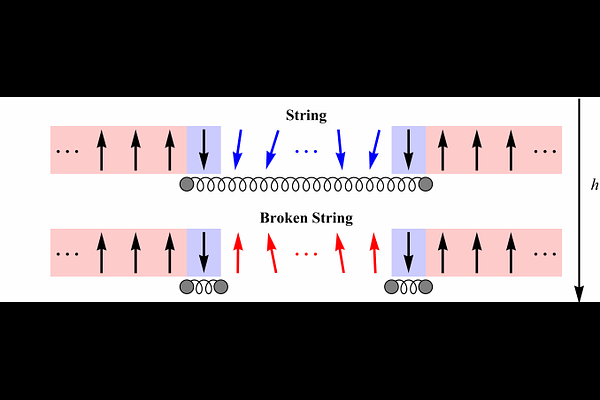Quantum simulation of bubble nucleation across a quantum phase transition

Quantum simulation of bubble nucleation across a quantum phase transition
De Luo, Federica Maria Surace, Arinjoy De, Alessio Lerose, Elizabeth R. Bennewitz, Brayden Ware, Alexander Schuckert, Zohreh Davoudi, Alexey V. Gorshkov, Or Katz, Christopher Monroe
AbstractThe liquid-vapor transition is a classic example of a discontinuous (first-order) phase transition. Such transitions underlie many phenomena in cosmology, nuclear and particle physics, and condensed-matter physics. They give rise to long-lived metastable states, whose decay can be driven by either thermal or quantum fluctuations. Yet, direct experimental observations of how these states collapse into a stable phase remain elusive in the quantum regime. Here, we use a trapped-ion quantum simulator to observe the real-time dynamics of ``bubble nucleation'' induced by quantum fluctuations. Bubbles are localized domains of the stable phase which spontaneously form, or nucleate, and expand as the system is driven across a discontinuous quantum phase transition. Implementing a mixed-field Ising spin model with tunable and time-dependent interactions, we track the microscopic evolution of the metastable state as the Hamiltonian parameters are varied in time with various speeds, bringing the system out of equilibrium. Site-resolved measurements reveal the emergence and evolution of finite-size quantum bubbles, providing direct insight into the mechanism by which the metastable phase decays. We also identify nonequilibrium scaling behavior near the transition, consistent with a generalized Kibble-Zurek mechanism. Our results demonstrate the power of quantum simulators to probe out-of-equilibrium many-body physics, including quantum bubble nucleation, a key feature of discontinuous quantum phase transitions, with application to studies of matter formation in the early universe.